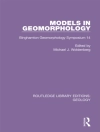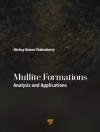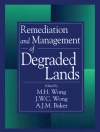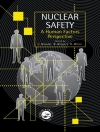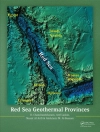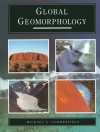The history of chemistry and pharmaceutical sciences is an impressive success story. The products of chemical and pharmaceutical industries are present eve- where in our everyday life. They help to pursue the modern way of living and they contribute to our high standard of living and safety, mobility, communication te- nologies, food, health, textiles and drinking water treatment, among many others. These products are labeled under the categories: pharmaceuticals, pesticides, det- gents, fertilizers, dyes, paints, preservatives, food additives and personal care pr- ucts, to name a few. Within these categories, groups of chemicals with similar structures can be found. However, often groups of chemicals with very different structures belong to the same category. For a long time the production of chemicals and pharmaceuticals, their usage and application was connected with the heavy pollution of the environment and serious health effects. At the end of the last century, it was realised that the products of che- cal and pharmaceutical industries are presenting a new type of environmental pol- tion that may also pose a health risk to the consumer. Most chemicals are used in so-called open applications in excessive amounts e. g. for personal care, hygiene, plant protection, health and in textiles. In many cases such as scents, detergents, textile chemicals, surface disinfectants, pesticides and others it is unavoidable that these chemicals are released into the environment according to their intended use.
İçerik tablosu
Occurrence Concentrations, Sources and Fluxes of Xenobiotics in Urban Waters.- Quantitative Mass Flows of Selected Xenobiotics in Urban Waters and Waste Water Treatment Plants.- Identifying and Classifying the Sources and Uses of Xenobiotics in Urban Environments.- Illicit Drugs in the Urban Water Cycle.- Precious Metals in Urban Aquatic Systems: Platinum, Palladium and Rhodium: Sources, Occurrence, Bioavailability and Effects.- Fate and Effects of Little Investigated Scents in the Aquatic Environment.- Sources and Occurrence of Cyanotoxins Worldwide.- Occurrence and Measurements of Organic Xenobiotic Compounds in Harbour and Coastal Sediments.- Determination of Sources and Emissions of Persistent Organic Contaminants by Means of Sewage Sludge: Results from a Monitoring Network.- Fate, Effects and Risks of Xenobiotics in Urban Waters.- Metabolic and Co-metabolic Degradation of Industrially Important Chlorinated Organics Under Aerobic Conditions.- Photochemical Transformation of Pharmaceuticals in the Aquatic Environment: Reaction Pathways and Intermediates.- The Challenge of the Identification and Quantification of Transformation Products in the Aquatic Environment Using High Resolution Mass Spectrometry.- Transport and Fate of Xenobiotics in the Urban Water Cycle: Studies in Halle/Saale and Leipzig (Germany).- Pharmaceutical Contaminants in Urban Water Cycles: A Discussion of Novel Concepts for Environmental Risk Assessment.- Hydroxy Benzoate Preservatives (Parabens) in the Environment: Data for Environmental Toxicity Assessment.- Treatment Methods.- Efficiency of Removal of Compounds with Estrogenic Activity During Wastewater Treatment: Effects of Various Removal Techniques.- Criteria for Designing Sewage Treatment Plants for Enhanced Removal of Organic Micropollutants.- Xenobiotics Removal by Membrane Technology: An Overview.- Membrane Bio Reactors: A Cost-Effective Solution to Enhance the Removal of Xenobiotics from Urban Wastewaters?.- Removal of Xenobiotics from Wastewater in Sequencing Batch Reactors: Conventional and Two-Phase Configurations.- Fate and Occurrence of Surfactants-Derived Alkylphenolic Compounds in Conventional and Membrane Bioreactor (MBR) Wastewater Treatment Plants.- Removal of Xenobiotic Compounds from Water and Wastewater by Advanced Oxidation Processes.- Biological, Chemical and Photochemical Treatment of Commercially Important Naphthalene Sulphonates.- Uptake of Xenobiotics from Polluted Waters by Plants.- Treatment Techniques and Analysis of Stormwater Run-off from Roads in Hamburg, Germany.- Mitigation Measures – Technical and Socioeconomic Instruments.- Options for Mitigation: An Overview of Measures.- Outlook.- Outlook.- Erratum to: Chapter 12 Transport and Fate of Xenobiotics in the Urban Water Cycle: Studies in Halle/Saale and Leipzig (Germany).
Yazar hakkında
Despo Fatta-Kassinos received her Diploma in Chemical Engineering from the National Technical University of Athens, Greece and her M.Sc. in Environmental Management from the European Association for Environmental Management and Education (University of Athens, Greece – Joint Research Center, Ispra, Italy). She received her Ph.D. in Chemical Engineering from the National Technical University of Athens, Greece. She is a faculty member of the Department of Civil and Environmental Engineering of the University of Cyprus since 2003. She is the head of GAIA, Laboratory of Environmental Engineering where a number of scientific projects related to the treatment of xenobiotic compounds in aqueous matrices are being realised. She is a reviewer for several national and European funding bodies. Her principal research interests are in the field of water and wastewater treatment systems, monitoring of environmental pollution and environmental risk assessment. The main focus of her research is the development of advanced oxidation and other combined processes for the treatment of wastewater intended for reuse applications.
Kai Bester studied Chemistry and got his diploma (masters) degree from Hamburg University. He finished his Ph D in Marine Environmental and Analytical Chemistry at Hamburg University 1995. Kai Bester worked as scientists at RWTH Aachen, EU Institute for Reference Materials and Measurements (EC-JRC-IRMM) Geel, Belgium and University of Duisburg Essen. He achieved Habilitation in 2005 at the university Duisburg Essen. He is currently working at Aalborg University section for Biotechnology, Chemistry and Environmental Engineering as well as Institute for Environmental Analytical Chemistry University Duisburg-Essen. His main focus is fate and effect of xenobiotic compounds (personal care compounds, bactericides, pharmaceuticals, biocides, flame retardants etc.) in aquatic ecosystems and technical applications.
Klaus Kümmererstudied chemistry in Würzburg and Tübingen. He received his Diploma in Chemistry and a Ph D in Environmental and Analytical Chemistry from the University of Tübingen. He was head of the Chemistry Department at the Institute of Applied Ecology in Freiburg before he joined the University of Freiburg where he is currently head of the Section of Applied Environmental Research at the Department of Environmental Health Sciences of the Medical Centre Freiburg. In 1999 he became an Associate Professor in 2002 he was appointed Professor. He was visiting professor at the Case Western reserve University and has on going co-operations with researchers in Brazil, USA and several European countries. He was reviewer for several international funding bodies and is on board of several national and international committees and the editorial board of several scientific journals. He began research into xenobiotics in the water cycle in 1986 with a focus on pharmaceuticals, disinfectants and diagnostics since 1992. Other main fields of research are sustainable chemistry and sustainable pharmacy, benign chemicals and structure activity relationships


